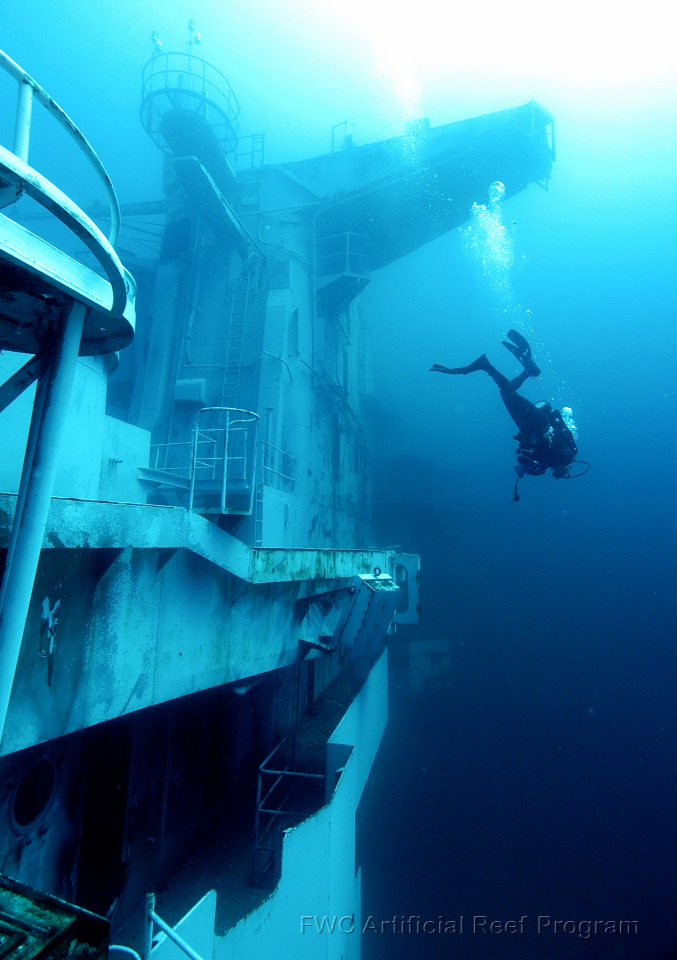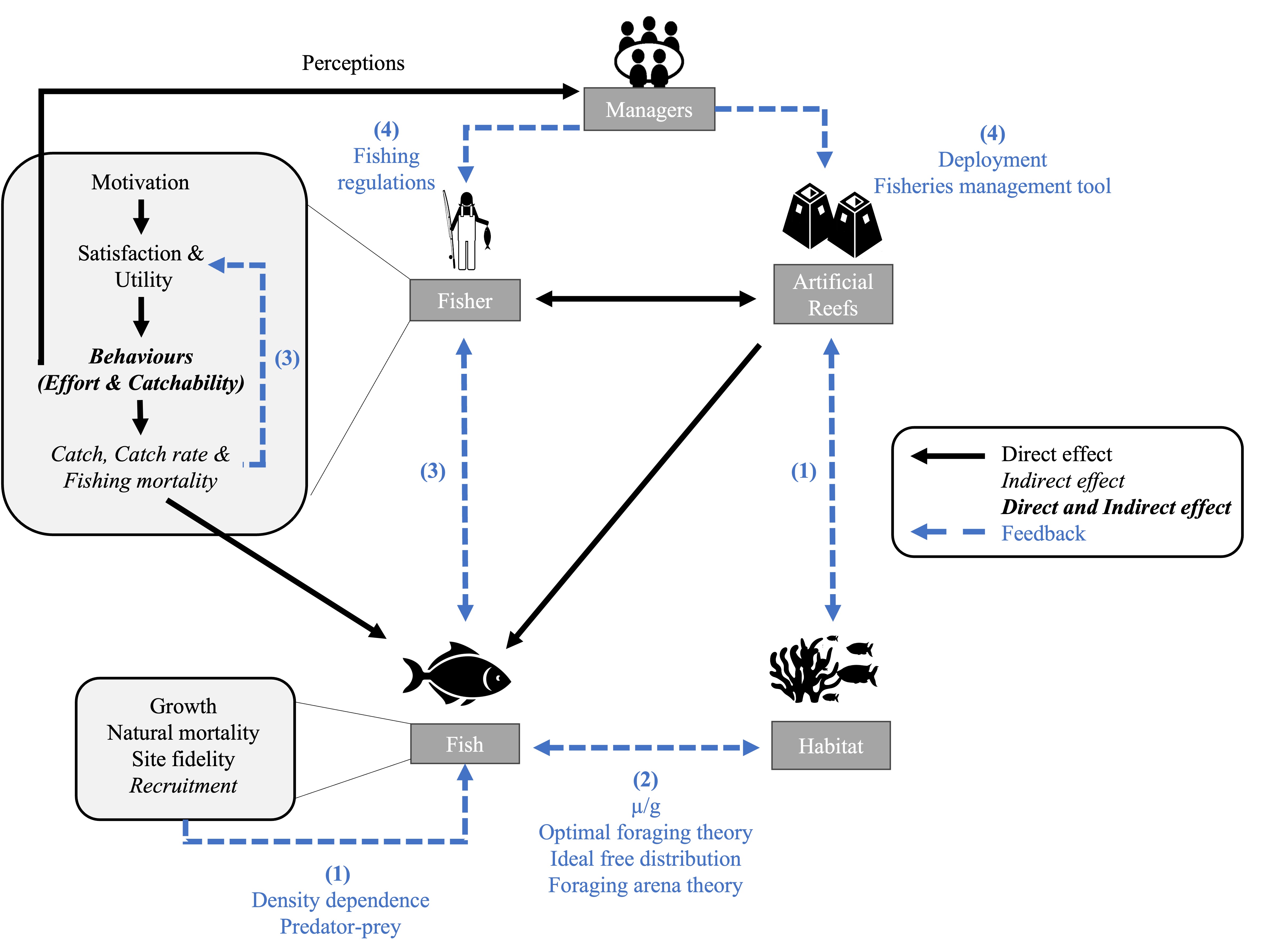Global synthesis of effects and feedbacks from artificial reefs on socioecological systems in recreational fisheries
Authors: Lisa Chong (UF), Zachary Siders (UF), Kai Lorenzen (UF), Robert Ahrens (PIFSC), Edward Camp (UF).

Substantial work has been done to understand the ecology of artificial reefs and an increasing number of studies have examined the socioeconomic aspects, however their effects on the overall socioecological system are not well understood. Artificial reefs are known to affect fish, fishers, surrounding habitat, and management; however, this has not been examined holistically as their feedbacks are difficult to intuit. Given the natural of widespread introduction of made-made structures to the seascape, it is likely that artificial reefs have local and systems-level effects on fisheries. This should be examined in the socioecological systems context as the ecological and socioeconomic impacts of artificial reefs do not exist in isolation.
We conducted a literature review to catalog effects and feedbacks of artificial reefs on social-ecological fisheries systems and recreational fisheries. We extracted information from both artificial reef and recreational fisheries research. This synthesis reveals that artificial reefs across the world may result in a net negative effect on fisheries as socioeconomic benefits outweigh the biological benefits and productivity. There may be unintended consequences if biological benefits from habitat-to-fish and fish-to-fish feedbacks are outweighed by population losses due to greater socioeconomic benefits from fish-to-fisher feedbacks. Taken in concert with their semi-permanent nature and apparent popularity with stakeholders, a view emerges of artificial reefs possibly functioning as a “social-ecological trap”. We also highlighted important effects of artificial reefs on fisheries and linkages that need to be accounted for when considering their deployment.

Now published: https://doi.org/10.1111/faf.12809